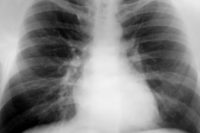New EU worker protection directive excludes diesel exhaust
Trade union blames lobbying efforts by industry

European workers are angry about a recent directive from the European Commission that fails to include diesel engine exhaust among the toxins that people should be protected from in the workplace.
Carcinogens and mutagens
The second draft of the revised Directive on the protection of workers from the risks related to exposure to carcinogens or mutagens at work was released last week by the Commission.
The European Trade Union Institute (ETUI), the research and training centre of the European Trade Union Confederation (ETUC), blames lobbying by the diesel fuel industry for the omission.
"A sign of capitulation"
“The Commission’s refusal to extend the Directive’s scope of application to include diesel engine exhaust emissions or to add them to the list of limit values is a sign of capitulation to the aggressive lobbying of employers’ associations,” said ETUI researcher Laurent Vogel.
He dismisses industry claims that diesel fumes are no longer carcinogenic thanks to the standards which apply to new diesel engines.
“This ignores the lack of scientific studies currently available to confirm the purported absence of cancer risk from the fumes generated by these new engines. What is more, workers are still exposed to diesel fumes from older-generation engines, and new engines frequently pose greater risks due to poor maintenance or handling.”
Three million exposed
More than three million workers in the European Union are exposed to diesel engine exhaust emissions at work. Based on figures for overall working life expectancy, the total number of workers exposed to these fumes during at least part of their working career amounted to 12 million in 2010, potentially rising to 20 million by 2060.
Vogel says it’s particularly difficult to understand the Commission’s decision given that one of its own working documents (see below) states that the lack of legislation prohibiting exposure to diesel engine exhaust at work will result in 230 000 deaths in the EU between 2010 and 2069.
“The Commission’s choice will merely exacerbate the far-reaching social divisions which make it more likely that certain groups will suffer from cancer,” he concluded.
WHO says it's a carcinogen
In 2012, the International Agency for Research on Cancer (an agency of the World Health Organization) categorised all diesel engine exhaust emissions as Class 1 carcinogens (proven human carcinogens).
Vogel believes that criticism should be levelled not only at the Commission’s failure to take action against diesel engine exhaust, but also at its lack of ambition. The Commission promised legislative amendments for a further seven carcinogens in its press release published on January 10, but only five substances are actually covered by the new binding limit values*. Although complex PAH (polycyclic aromatic hydrocarbon) mixtures and used engine oils appear in the annex defining the scope of application of the Directive, no limit values have been set for these two carcinogens.
Adding these five new Binding occupational exposure limits (BOELs) to the 13 presented in May 2016 by the Commission brings the total number of BOELs to 18, even though Marianne Thyssen, European Commissioner for Social Affairs, promised that 25 would be proposed during 2016 and a total of 50 would be reached by 2020.
Bigger and faster steps needed
The ETUC also believes that the Commission’s draft is too conservative.
“The Commission can and should adopt a more ambitious strategy to eliminate work-related cancers. The scale of the problem calls for bigger and faster steps. The EU needs to adopt an action plan for preventing occupational cancers and integrate it into the upcoming European Pillar of Social Rights,” said Esther Lynch, the ETUC Confederal Secretary responsible for occupational health issues.
The first list of BOELs is currently being debated, and the European Parliament will vote on the amendments in April 2017. The final text is scheduled for adoption by Parliament and the Council before the end of the year.
* Epichlorohydrin, ethylene dibromide, ethylene dichloride, 4,4-methylenedianiline, trichloroethylene.
Resources:
The Commission press release (pdf - 59.04 Kb)
The ETUC press release (pdf - 132.41 Kb)
Looking for a reprint of this article?
From high-res PDFs to custom plaques, order your copy today!





